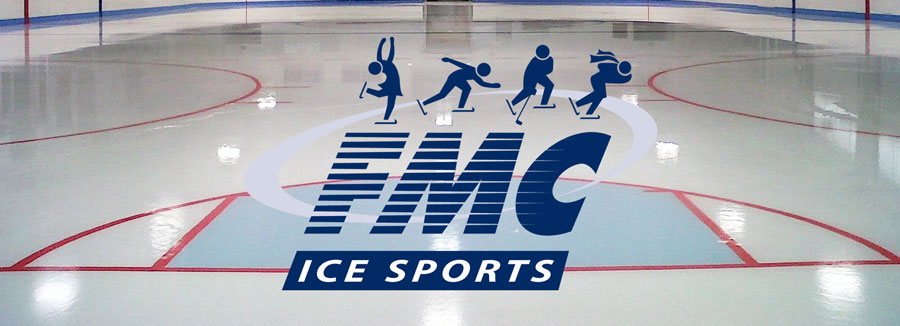FMC News & Events

How To Make Your First Skating Experience A Good One
 Choose skates that will help you
Choose skates that will help you
Hockey skates are round and shaped like a bowl. They don’t have a definitive toe or heel. On the other hand, recreational skates are flatter for the majority of the blade with a definitive heel and a toe pick. If you rock forward or back in recreational skates, the heel or toe will catch you. The toe pick is also a helpful anchor when trying to get up.
Dress for success
- One pair of thin socks that reach above the boot and do not have any designs help feet stay warmer and are more comfortable.
- Long sleeves and pants in layers work best. It’s cold out there, but you’ll warm up once you get going
- Gloves or mittens make for warm hands that can make all the difference.
- Waterproof clothing, especially for little ones, can provide extra padding while keeping you dry.
- A thick stocking cap at least, but a helmet is better. A bike helmet will do but a caged helmet provides more protection.
- Sometimes, equipment intended to help, like elbow and knee or shin pads, can restrict movement and make these beginning stages a little more difficult. Snowpants can provide a little extra padding while still allowing skaters to move.
- Be sure skates are snug and tied all the way up. We have a great video on tying skates that can be found through this link: https://fmcicesports.com/enews/tying-skates-correctly/
Baby Steps
Just like walking on ice on the sidewalk, approach the ice with caution and take small steps. Take it slow and let yourself get used to the ice at a pace that is comfortable for you. Some tips:
- Hold the wall if it makes you feel more comfortable.
- Keeping the feet closer together, such as when you are marching, opposed to walking, will keep your weight over a smaller space and allow you to maintain better balance.
- Keep your hands where you can see them.
- Try to watch where you’re going opposed to your feet.
- Remember to breathe.
- Sometimes distracting yourself by listening to the music or singing a song to yourself can be helpful.
- Celebrate your successes. Give yourself credit for each baby step!
It’s OK to fall
Every skater will fall now and again so knowing how to fall and get up can really help. Consider trying to fall down and get up in your skates off the ice before going on ice. Going through the motions off ice can help you feel more at ease when you have to do them on ice. This is especially good advice for little ones.
The best way to fall is to control it instead of fighting it. If you feel yourself starting to fall, first bend your knees and freeze. Try to put your hands in front of you for balance. If you still feel like you’re falling, it’s best just to sit down in as controlled of a manner as you can muster.
- Let your lower half take more of the fall instead of your arms and wrists.
- Try to let the more meaty parts of your body cushion the fall if you can.
- Avoid hitting elbows, knees or your head.
To get up:
- Start on your knees with your torso up tall.
- Put one knee up with the blade of that skate flat.
- Using both hands on the knee that’s up, or, one on the knee and one on the ice, push yourself up with from the legs.
- Put both feet flat and close to each other.
Freeze once you get up to make sure you’re balanced before moving again.
Let everyone carry their own weight
It might seem natural to want to hold hands with friends or hold up little ones while they skate. This can get tiring and sometimes throw everyone off balance. When helping others, it might work better face to face with the more comfortable skater going backwards. This will allow the learning skater to support themselves and the helping skater to offer support.
Try marching to start and lightly holding hands. If the learning skater starts to fall or get a little off balance, both should bend the knees and try to freeze, following this and other suggestions in the “It’s OK to Fall” section above.
As the learning skater starts to get more comfortable, experiment with letting the hands go and asking the learning skater to march towards the helping skater. When the learning skater feels comfortable, skating side by side and lightly holding one hand might be a comfortable transition. If not, consider having the learning skater skate near the wall and holding it with one hand, the helping skater skating next to them but not holding on.
